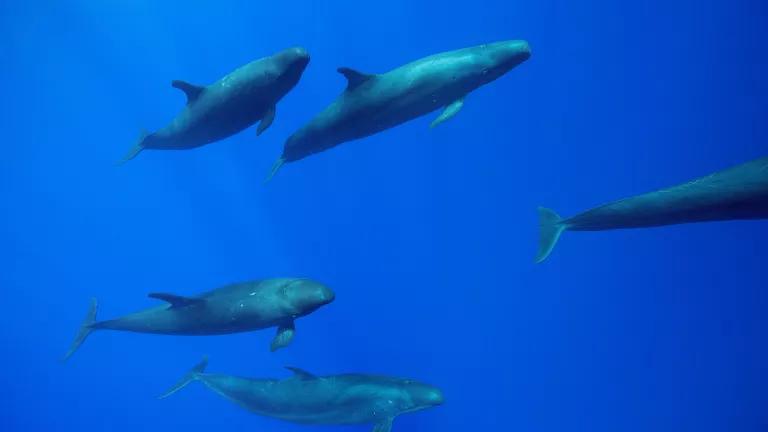Good News for These Hawaiian Dolphins (That Look an Awful Lot Like Orcas)
After years of fighting to protect their habitat, we did it! Hawaii’s false killer whales now have a chance to come back from the brink.

PB8G5W False killer whales off the Kona Coast of Hawaii's Big Island
False killer whales are cetaceans with an identity crisis. They may resemble Shamu in some ways, but the blimp-shaped, spiny-toothed predators are actually dolphins. A small population of them in the waters off Hawaii is facing a conservation crisis, too. Just around 150 remain.
But there’s hope yet: The population can now say aloha to new habitat protections. Responding to legal action by NRDC, the National Marine Fisheries Service has designated 17,500 square miles of ocean as critical habitat for this genetically distinct group of Pseudorca crassidens, which live in the islands’ coastal waters rather than the deep Pacific like their cousins.
Oh and, did we mention they are charming?
“We are thrilled to finally have habitat protection for Hawaii’s false killer whales,” says Giulia Good Stefani, an NRDC staff attorney who specializes in marine mammals. “It’s absurd that it took years of litigation to get here, but we know species with designated critical habitat do much better than those without, and winning that protection—even if long overdue—is a victory for this imperiled species.”
Among the biggest threats are fishing operations, which kill or injure the false killer whales while simultaneously reducing their food supply—fish such as yellowfin tuna and mahi-mahi. Underwater detonations and noise pollution from the Navy’s extensive training around the islands also put them at risk.
The win comes after years of advocacy that began back in 2009 with a petition to classify the population as endangered under the Endangered Species Act (which, by the way, is currently under attack). The National Oceanic and Atmospheric Administration eventually agreed in 2012 that these unique marine mammals deserved protected status, which then qualified them for critical habitat protection. And now they’ve got it!
This is good news not only for these quirky island dolphins, but for any of us lucky enough to spot them.
This NRDC.org story is available for online republication by news media outlets or nonprofits under these conditions: The writer(s) must be credited with a byline; you must note prominently that the story was originally published by NRDC.org and link to the original; the story cannot be edited (beyond simple things such as grammar); you can’t resell the story in any form or grant republishing rights to other outlets; you can’t republish our material wholesale or automatically—you need to select stories individually; you can’t republish the photos or graphics on our site without specific permission; you should drop us a note to let us know when you’ve used one of our stories.


Just How Bad Was Hawaii’s Volcanic Eruption for Sea Turtles?
How to Become a Community Scientist
Finally, a High Seas Treaty to Protect the World’s Oceans